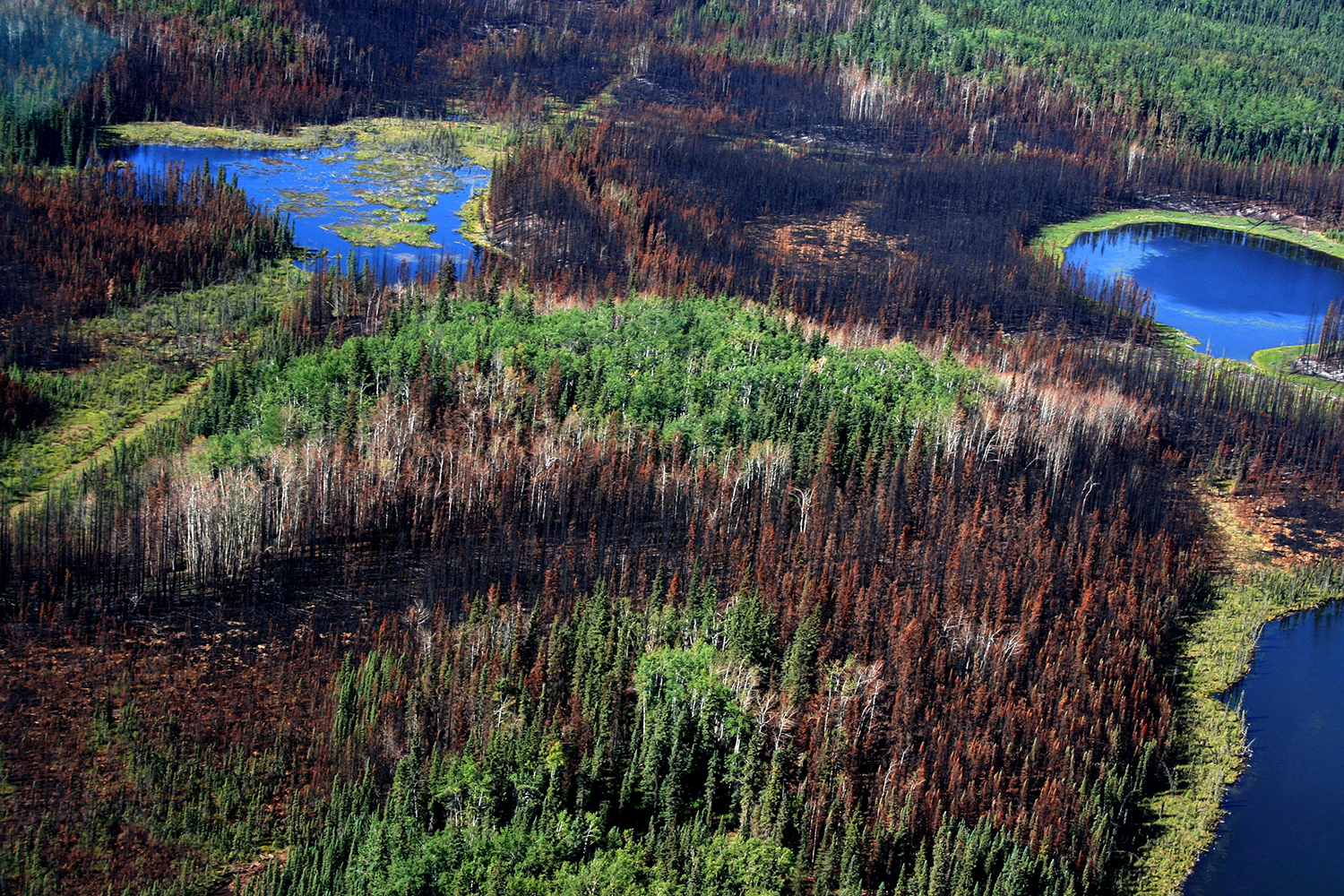
Abstract
Wildfires are a common disturbance event in the Canadian boreal forest. Within event boundaries, the level of vegetation mortality varies greatly. Understanding where surviving vegetation occurs within fire events and how this relates to pre-fire vegetation, topography, and fire weather can inform forest management decisions. We used pre-fire forest inventory data, digital elevation maps, and records of fire weather for 37 naturally-occurring wildfires (1961 to 1982; 30 to 5500 ha) covering a wide range of conditions in the western Canadian boreal forest to investigate these relationships using multinomial logistic models. Overall, vegetation mortality related to a combination of factors representing different spatial scales. Lower vegetation mortality occurred where there was lower fuel continuity and when fires occurred under non-drought conditions. Higher classification accuracy occurred for class extremes of no mortality (i.e., unburned areas within the burn event) and high mortality; partial vegetation mortality classes were harder to distinguish. This research contributes to the knowledge required for natural pattern emulation strategies, and developing responses to climate change.
Find the full article (open access) here.
Citation
Colin Ferster, Bianca Eskelson, David Andison, Valerie LeMay (2016). Vegetation Mortality within Natural Wildfire Events in the Western Canadian Boreal Forest: What Burns and Why? Forests. 7(9), 187; doi: 10.3390/f7090187






